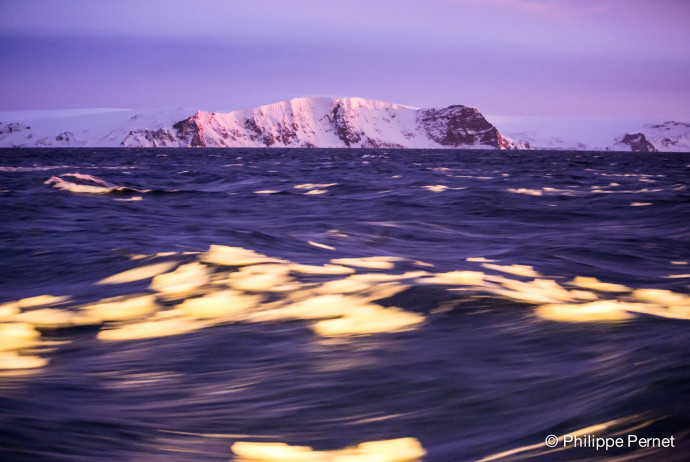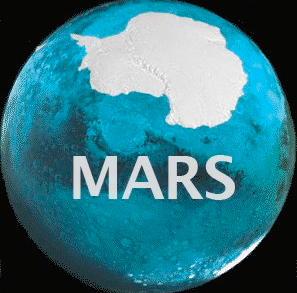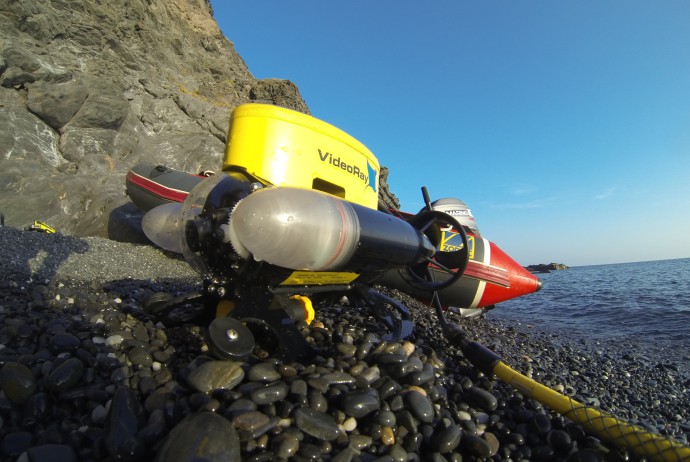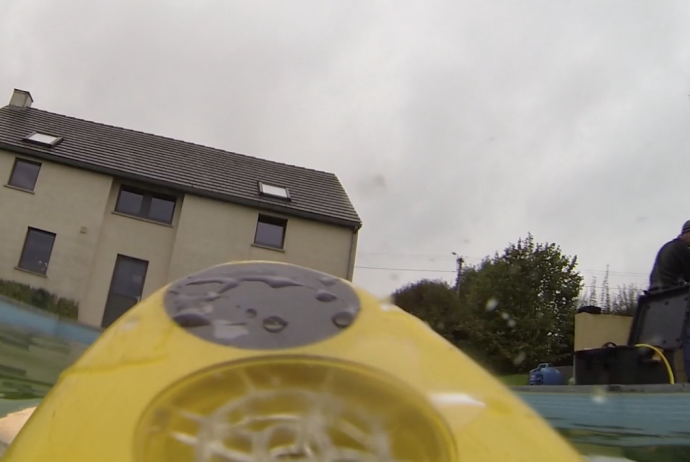Philippe Pernet, from the Marine Biology Lab (ULB) is participating in the 2014 U.S. Antarctic Marine Living Resources (AMLR) Program onboard the RVIB Nathanial Palmer.
Find out more in the vERSO project’s expeditions section!
Université Libre de Bruxelles
Microbiology-related research

Philippe Pernet, from the Marine Biology Lab (ULB) is participating in the 2014 U.S. Antarctic Marine Living Resources (AMLR) Program onboard the RVIB Nathanial Palmer.
Find out more in the vERSO project’s expeditions section!
This week, we are hosting another workshop to scope out the next steps for the Microbial Antarctic Resources System (mARS) , a followup project from SCAR’s Expert Group on Antarctic Biodiversity Informatics (EG-ABi).
The participants include Alison Murray (Desert Research Institute), Anton Van de Putte (biodiversity.aq), Nabil Youdjou (biodiversity.aq) and Bruno Danis (Marine Biology Lab). PhD students from the CCAMBIO project also attended, as beta-testers.
The Microbial Antarctic Resources System (mARS) is envisioned as an information system dedicated to facilitate the discovery, access and analysis of geo-referenced, molecular microbial diversity (meta)data generated by Antarctic researchers, in an Open fashion. The scope of diversity will encompass all freel-living and host-associated virus, Bacteria, Archaea, and singled-celled Eukarya.
mARS focuses on past, present and future works. It offers a community-driven platform for scientists to publish, document, analyse and share their (meta)data with the broad community for science, conservation and management purposes, in the spirit of the Antarctic Treaty.
This week, we will be beta-testing the mARS to take it to Step 3, as described in our vision document.

You can register now for the Microbes, Diversity and Ecological Roles session at the SCAR Open Science Conference , which will be held in Auckland, New Zealand from 23 rd August to 3rd September 2014
Most, if not all, Antarctic ecosystems are home to microbes that can span the range from sparse to dense and low to high diversity assemblages. These organisms o<en harbor specialized capabilities to withstand the environmental extremes that the high latitudes of the Antarctic pose. This session welcomes contribu/ons to our understanding and appreciation of Antarctic microbial systems, exploring diversity and ecological roles, contributions to biogeochemical cycles, and interactions between organisms (symbiotic, predatory or parasitic) and ultimately how microbes come together to influence Antarctic systems.
The increased recognition of microbes in all domains of life inhabiting Antarctic ecosystems – and in some cases not only surviving, but thriving in these systems (e.g. aquatic, icy, soil, rock, subglacial, marine benthic or pelagic) is gaining traction largely due to increased scientific exploration of diverse environments paralleled with technologic improvements in molecular sciences (e.g. next generation sequencing and bioinformatics analyses), application of geobiological tools, and remote sensing of both environments and organisms. This session has been developed by AntEco and the International Union of Biological Sciences.
The session is convened by:
Prof. Alison Murray, DRI, USA
Prof. Nils Chr. Stenseth, University of Oslo, Norway
Dr. Ian Hawes, University of Canterbury, New Zealand
Abstract submission deadline: 14 February 2014
Download the flyer here: SCAR-OS_MicrobesSessionFlyer

This week, we will be hosting a hands-on workshop to push the mARS project further, with Alison Murray (Desert Research Institute), Anton Van de Putte and Nabil Youdjou (biodiversity.aq project)
The Microbial Antarctic Resources System (mARS) is envisioned as an information system dedicated to facilitate the discovery, access and analysis of geo-referenced, molecular microbial diversity (meta)data generated by Antarctic researchers, in an Open fashion. The scope of diversity will encompass all freel-living and host-associated virus, Bacteria, Archaea, and singled-celled Eukarya.
mARS focuses on past, present and future works. It offers a community-driven platform for scientists to publish, document, analyse and share their (meta)data with the broad community for science, conservation and management purposes, in the spirit of the Antarctic Treaty.
mARS is composed of interoperable modules, iteratively building the microbial component of the biodiversity.aq network.
To the best extent possible, the wishes of the community regarding mARS functionalities will be reflected in the flexibility and scalability of the system. Feedback is expected from the users community in order to align their needs and the functionalities of mARS.
This week, we will try to get through Step 3 of the mARS system and prepare for Step 4 once we have enough data in mARS to make it worthwhile.
mARS steps include:
1. Data description and discovery
2: Habitat and Microbial Sequence Metadata Entry (MiMARKS Data Standard; Microbial_Sequence_Set_Template)
3: Georeferenced-molecular sequence database integration
4: Processing batch sequence data –Circum-Antarctic microbial diversity
You can find more on the mARS white paper page.

A small team from the BIOMAR Lab set a research mission to the Bay of Portman, Spain. The team was composed of Philippe Pernet (technician), three master students (Valérie Rossez, Andrea Garvetto and Maxime Coupremanne) under the supervision of Bruno Danis. The team reached the Bay on October 16th, 2013 for a 10-day stay.
The Bay of Portman was chosen for its exceptional environmental characteristics, from a contamination standpoint. A conference was recently held on the subject, involving our colleagues Drs Maria Jose Martinez and Carmen Perez, both from the Research Group of Soil Pollution in the University of Murcia.
A series of sampling and measurement were carried out in the framework of the master students respective projects:
Valérie Rossez worked on comparative acid-base physiology in two species of sea urchins (Paracentrotus lividus and Arbacia lixula), investigating the relationship between this physiological parameters and the uptake of contaminants but the sea urchins

Paracentrotus lividus (image from Encyclopedia of life, www.eol.org)

Arbacia lixula (picture from Encyclopedia of Life, www.eol.org)
Andrea Garvetto worked on microbial diversity, and took samples to investigate the link between the levels of contamination and microbial community structure in digestive pellets of two species of sea urchins (Paracentrotus lividus and Arbacia lixula), in various algae as well as in the seawater and sediments (various granulometries).
Maxime Coupremanne carried out a fine-scale mapping of the biodiversity and habitats of the Bay and its surroundings using underwater video transects using the lab’s ROV as well as videos shot by SCUBA divers.
Also, samples were taken for heavy metal levels analyses for each corresponding stations. The team was able to work in a total of 16 stations in the Bay, organised in a set of transects (from inside to outside the Bay as well as along the coast, following the main currents), and has come back to the Lab to process the samples. This pool of samples and video transects constitutes a unique benchmark to address potential future changes, for example in the mining activities of the Bay of Portman.

Tomorrow, we’re leaving for Portman, Spain for a sampling mission. We’ll be collecting samples for microbiology, ecotoxicology and habitat mapping. We’ll be using scuba diving and the Lab’s micro-ROV for this purpose. We hope to be able to screen the bay’s contamination status, and determine the impact on selected representatives from its ecosystems at various levels of biological organization. We’ll post more as we go! Special thanks to Guy and Fabienne, for allowing us to tryout the ROV in their swimming pool 🙂
Here’s a map of Portman:
The Bay is located close to Carthagena, in the south east Spain, and displays residual metal contamination caused by the dumping of mine tailings into the bay during the 20th century. High levels of concentrations of Hg, Cd, Pb, Cu, Zn, and As have been measured in different biotic and abiotic compartments of the bay.